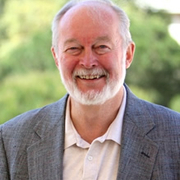- Level Foundation
- Duration 12 hours
- Course by University of California, Irvine
-
Offered by

About
Before the advent of quantum mechanics in the early 20th century, most scientists believed that it should be possible to predict the behavior of any object in the universe simply by understanding the behavior of its constituent parts. For instance, if one could write down the equations of motion for every atom in a system, it should be possible to solve those equations (with the aid of a sufficiently large computing device) and make accurate predictions about that system’s future. However, there are some systems that defy this notion. Consider a living cell, which consists mostly of carbon, hydrogen, and oxygen along with other trace elements. We can study these components individually without ever imagining how combining them in just the right way can lead to something as complex and wonderful as a living organism! Thus, we can consider life to be an emergent property of what is essentially an accumulation of constituent parts that are somehow organized in a very precise way. This course lets you explore the concept of emergence using examples from materials science, mathematics, biology, physics, and neuroscience to illustrate how ordinary components when brought together can collectively yield unexpected, surprising behaviors. Note: The fractal image (Sierpinkski Triangle) depicted on the course home page was generated by a software application called XaoS 3.4, which is distributed by the Free Software Foundation under a GNU General Public License. Upon completing this course, you will be able to: 1. Explain the difference in assumptions between an emergent versus reductive approach to science. 2. Explain why the reductivist approach is understood by many to be inadequate as a means of describing and predicting complex systems. 3. Describe how the length scale used to examine a phenomenon can contribute to how you analyze and understand it. 4. Explain why the search for general principles that explain emergent phenomena make them an active locus of scientific investigation. 5. Discuss examples of emergent phenomena and explain why they are classified as emergent.Modules
Getting Oriented
3
Readings
- Welcome Message
- Course Overview
- Thank you to the Reuben H. Fleet Science Center!
Introduction to Emergent Phenomena
3
Videos
- Video Introduction: Concept of Emergence
- Video Introduction: Reuben H. Fleet Science Center - Part 1
- Video Introduction: Reuben H. Fleet Science Center - Part 2
Module Introduction
1
Videos
- Video: Reuben H. Fleet Science Center - Complex Fluids
1
Readings
- Module Overview
Examining The Mystery of Foam
1
Assignment
- Module 2 Quiz
1
Peer Review
- Outrageous Ooze
3
Videos
- Video: The Mystery of Foam
- Video: Foam and Sand
- Video: Sand Demonstration
Extended Learning
1
Readings
- Further Reading: Emergent Phenomena
Module Introduction
2
Videos
- Video: Reuben H. Fleet Science Center - Chaos Part 1
- Video: Reuben H. Fleet Science Center - Chaos Part 2
1
Readings
- Module Overview
Examining Chaotic Dynamics
1
Assignment
- Module 3 Quiz
1
Peer Review
- Fractal Assignment
4
Videos
- Video: Introduction to Chaotic Dynamics
- Video: What causes chaotic behavior?
- Video: The principles of chaotic dynamics
- Video: Chaotic Dynamics and Fractals
Extended Learning
1
Videos
- Video: Don Saari Interview
1
Readings
- Further Reading: Web Resources on Chaotic Dynamics and Fractals
Module Introduction
3
Videos
- Video: Reuben H. Fleet Science Center - Pattern Formation Part 1
- Video: Reuben H. Fleet Science Center - Pattern Formation Part 2
- Video: Reuben H. Fleet Science Center - Pattern Formation Part 3
1
Readings
- Module Overview
Examining Pattern Formation and Systems Biology
1
Assignment
- Module 4 Quiz
1
Peer Review
- Biological Pattern Formation and Reaction-Diffusion Interactions
3
Videos
- Video: Patterns in One Dimension
- Video: Turing
- Video: How Plants Grow
Extended Learning
2
Videos
- Video: Fred Wan Interview
- Video: Jun Allard Interview
1
Readings
- Further Reading: Web Resources on Biological Pattern Formation
Module Introduction
1
Videos
- Video: Reuben H. Fleet Science Center - Quantum Mechanics
1
Readings
- Module Overview
Examining Quantum Coherence, Many-Body States, and Quantum Computing
1
Assignment
- Module 5 Quiz
4
Videos
- Video: Introduction to Emergence
- Video: Describing Emergence
- Video: Fractionalization Part 1
- Video: Fractionalization Part 2
Extended Learning
1
Videos
- Video: Siddharth Parameswaran Interview
1
Readings
- Further Reading: Reductionism, Entropy, and Randomness
Module Introduction
1
Videos
- Video: Reuben H. Fleet Science Center - Consciousness
1
Readings
- Module Overview
Examining Consciousness
1
Assignment
- Module 6 Quiz
1
Peer Review
- The Mystery of Consciousness - A Hard Problem?
1
Videos
- Video: Fields of Consciousness
Extended Learning
1
Videos
- Video: Andrea Nicholas Interview
1
Readings
- Further Reading: Web Resources on Consciousness
Auto Summary
Explore the fascinating concept of emergence in the "Emergent Phenomena in Science and Everyday Life" course. Guided by expert instructors, delve into materials science, mathematics, biology, physics, and neuroscience to understand how simple components can lead to complex behaviors. This foundational science and engineering course spans 720 minutes, offering insights into why traditional reductive approaches fall short in predicting complex systems. Available through Coursera's Starter subscription, it's perfect for curious minds eager to grasp the unexpected wonders of the natural world.

Michael Dennin

Jun Allard

Donald Saari

Andrea Nicholas

Fred Y.M. Wan

Siddharth A. Parameswaran


